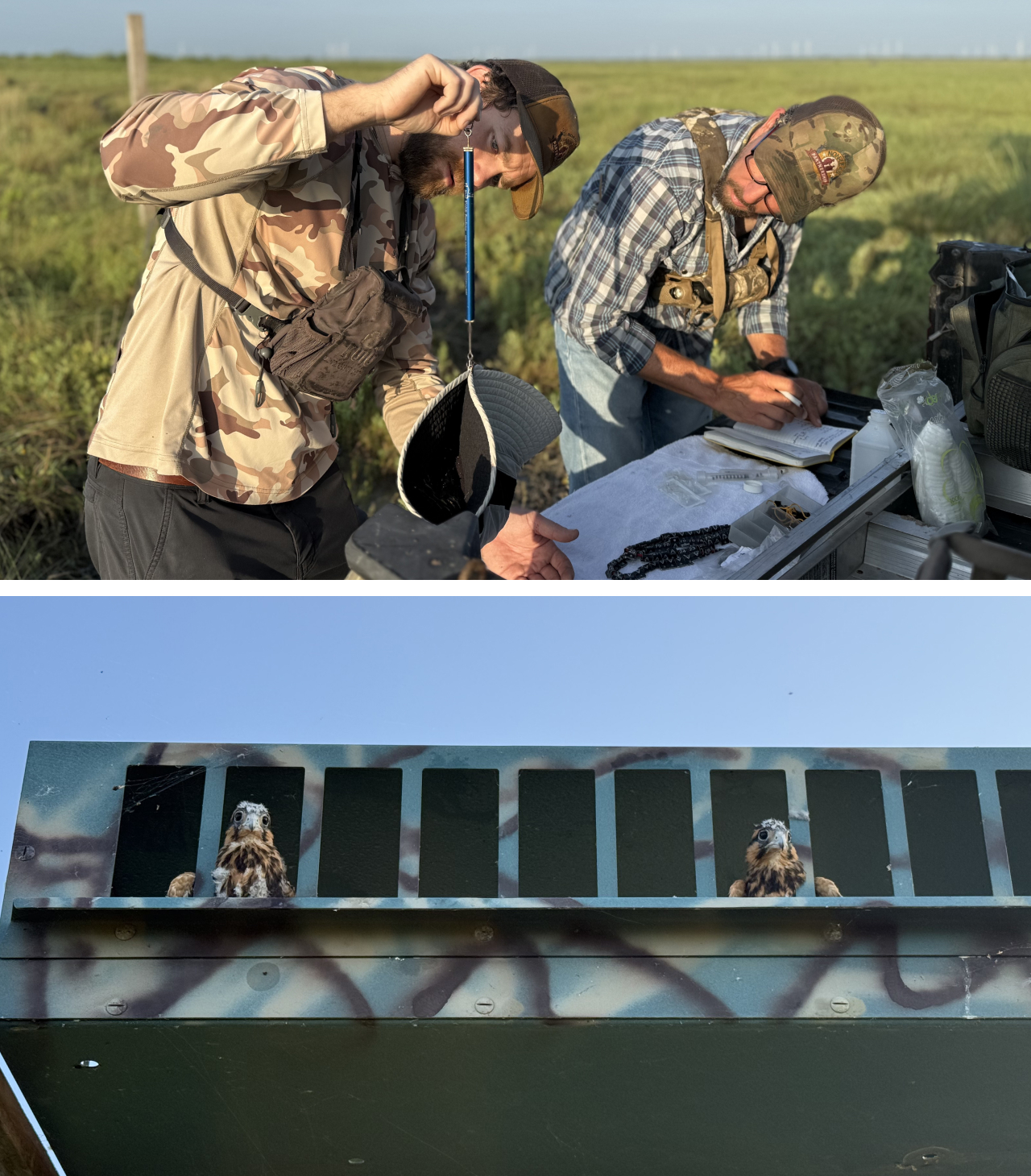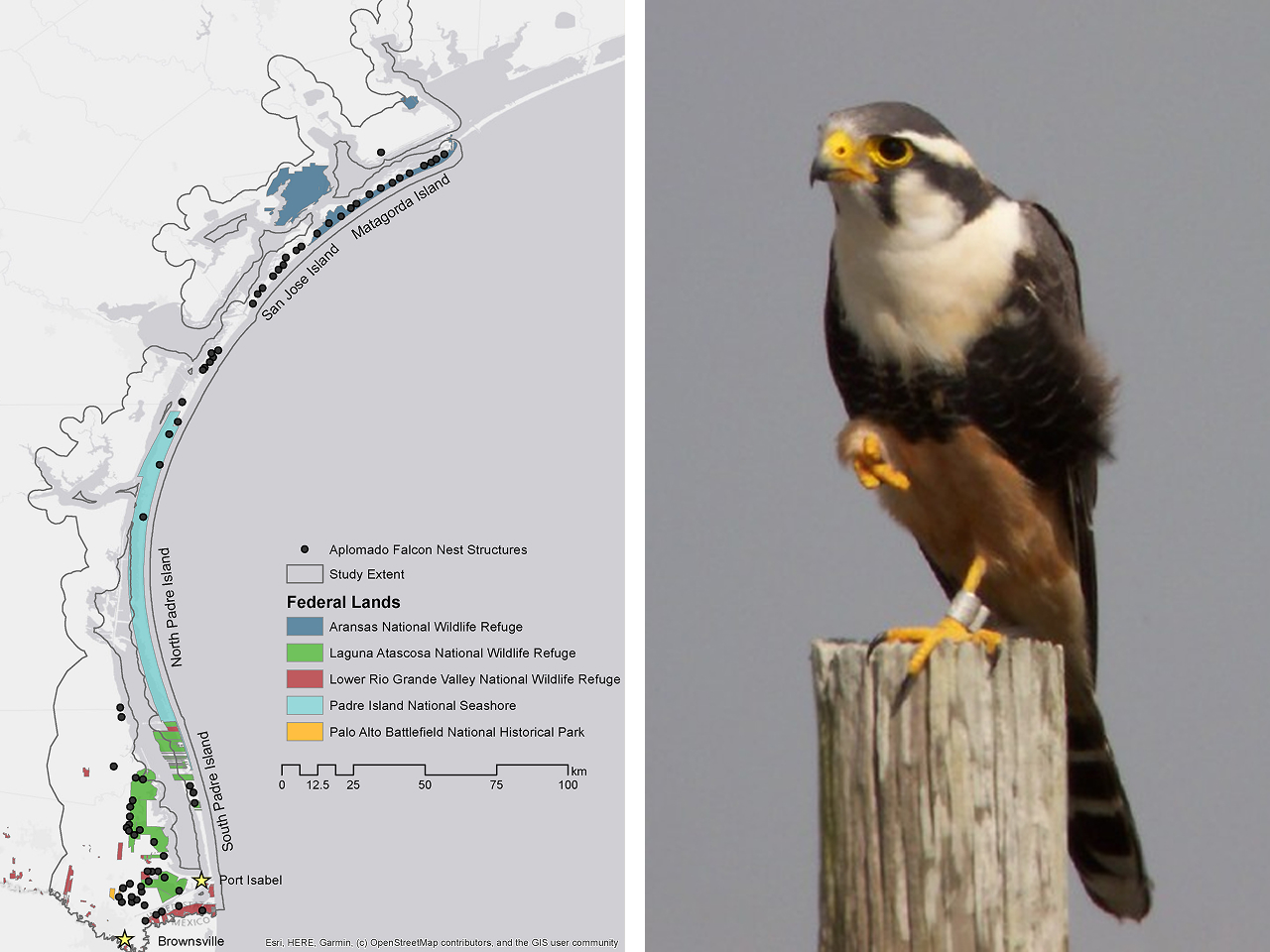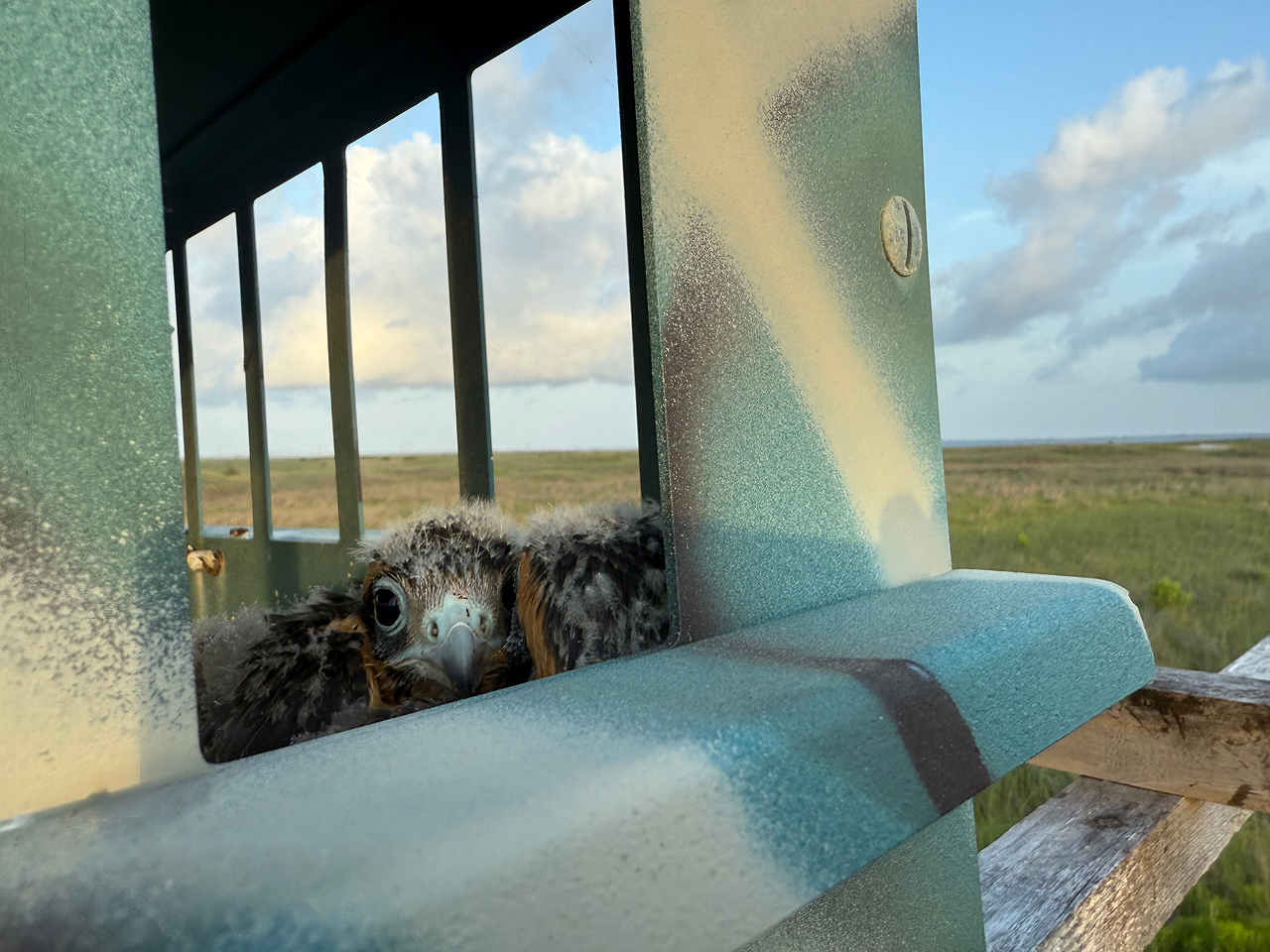
Paul Juergens
The Aplomado Falcons Keep Moving Forward
Another successful season for our Aplomado Falcon Recovery Program is near completion! On the South Texas coast, Peregrine Fund biologists monitor two Northern Aplomado Falcon subpopulations: one spread across the barrier islands (from Matagorda Island to Padre Island) and another in Laguna Atascosa National Wildlife Refuge (LANWR) and surrounding area. From April 16–May 3, the team conducted occupancy surveys to identify locations of territorial pairs. Using that information, they then returned on May 21 to perform productivity surveys continued through July, during which they band nestlings, document fledgling success, and collect blood samples for DNA analysis.
This year proved to be challenging for our team to access the southern subpopulation within the LANWR area due to extreme weather. Torrential rains and damaging winds flooded the landscape, but with tenacity and grit, our team was able to access the sites on foot and using off-road vehicles. In total, the program documented 26 territorial pairs, a small increase from 25 pairs in 2024, but a step in the right direction. Notably, the falcons have finally reached a near-full recovery on Matagorda Island after Hurricane Harvey decimated the population in 2017, with 11 pairs nesting there this year.
During the productivity surveys, the team noted that the LANWR pairs generally had lower reproductive success than the barrier island pairs, likely due to the extreme weather. But one LANWR pair defied the norm and produced four young! This is only the fourth time we've observed a brood with four nestlings in the U.S. population in our program's history. (The four are pictured in the banner image atop this article.) Within the LANWR subpopulation, pairs that chose natural nests had fewer young on average than those who nested in artificial nesting structures. This further validates the value of artificial nesting structures in providing secure nesting sites in the challenging coastal environment.
But the most exciting find this season requires a little backstory. In 2021, six falcons were experimentally released on North Padre Island (NPI), but none remained to breed. One male traveled to Mustang Island, where he’s raised young since 2024, including three this year. This spring, our biologists discovered that a son from his 2024 nest had retraced his father’s footsteps (or should we say, wingbeats) back to NPI, paired with another young bird (less than a year old), and successfully produced two offspring (pictured below). This is the first documented Aplomado Falcon nest on NPI ever recorded!
In another full-circle story, Conservation Field Biologist Tom Hudson—who oversaw the 2021 NPI falcon release as a hack site attendant—was in Texas again this year to band the nestlings of both father and son. (Tom is seen weighing a nestling at left above.) “Seeing one of the released birds successfully produce young marks the 2021 release as a success,” reflects Tom. “But having his offspring set up a successful new territory furthers the impact of our efforts. These nesting pairs and their offspring are proof of what The Peregrine Fund and our partners are capable of achieving when we work together towards a common goal.”
The Aplomado Falcon Recovery Program is our longest-running program at The Peregrine Fund. After suffering a huge hit to the population in 2017 from Hurricane Harvey, every successful breeding season is a reason for celebration!








